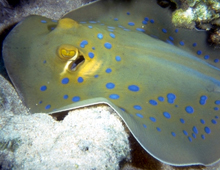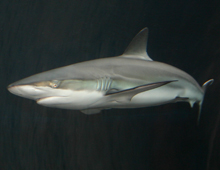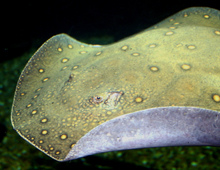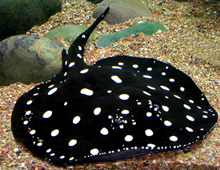The Brown shark, also known as the Sandbar shark is commonly found in public aquariums. The genus name Carcharhinus is derived from Greek words meaning “sharpen nose”. It is a coastal-pelagic shark that lives in temperate and tropical waters throughout the world. It is naturally a bottom-dwelling shark found in shallow coastal waters, and is known to be highly migratory. The Brown shark is an important species in commercial fisheries along the Eastern United States, and is the primary targeted species in this area. Because of its age at reproduction and the fact that it reproduces every other year producing a small number of young, the Brown shark is vulnerable to over-exploitation. Although rarely associated with attacks on humans, the size of the Brown shark makes it a potential threat.









